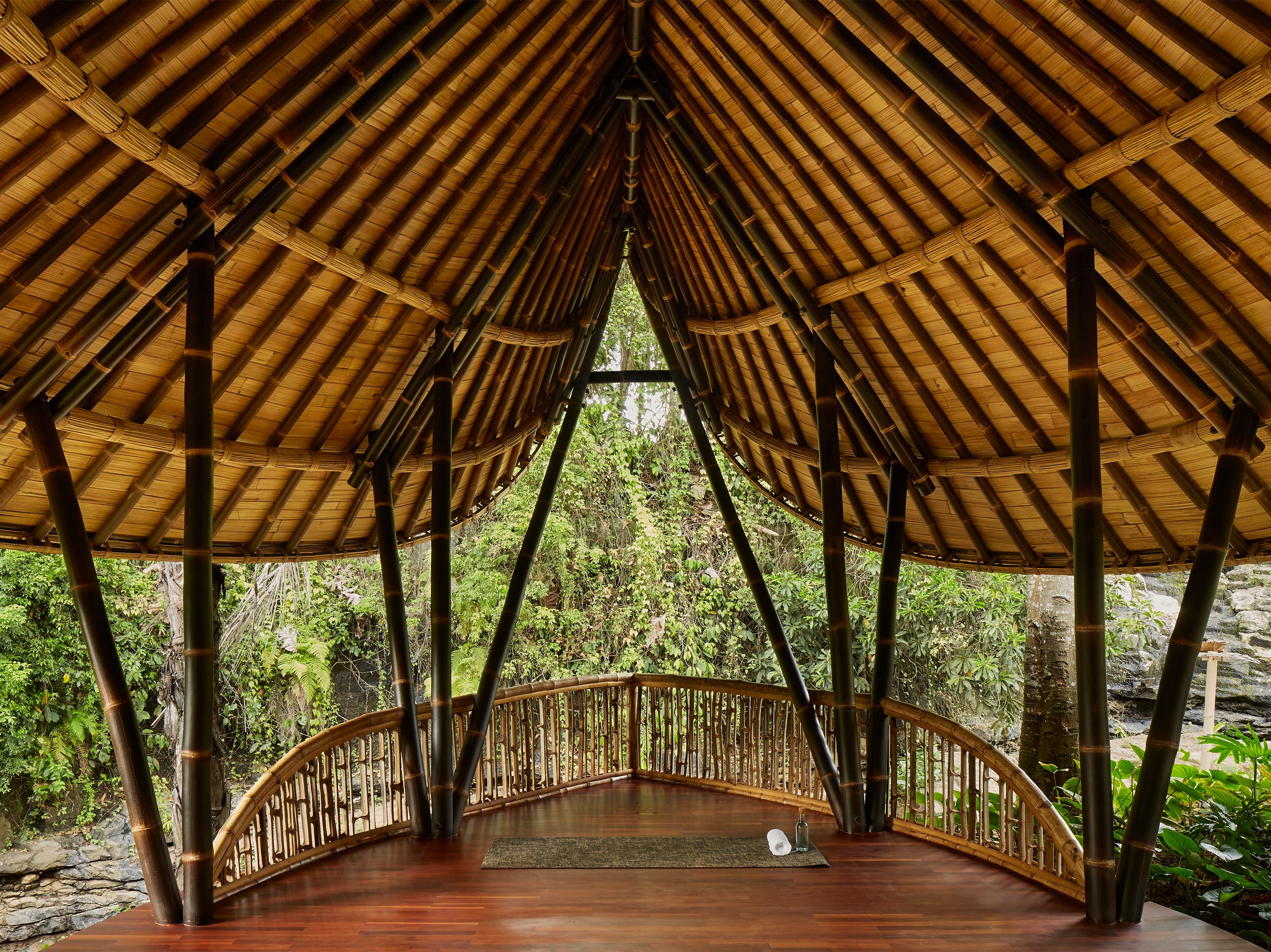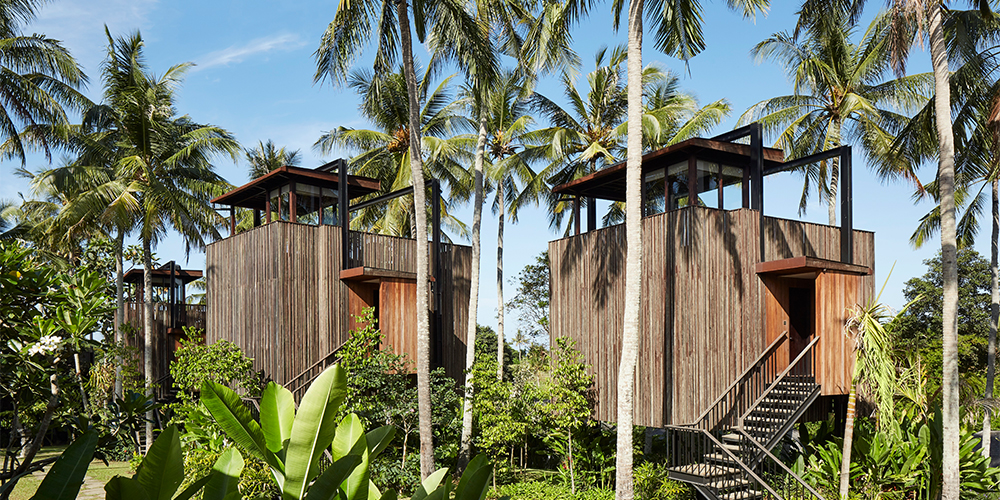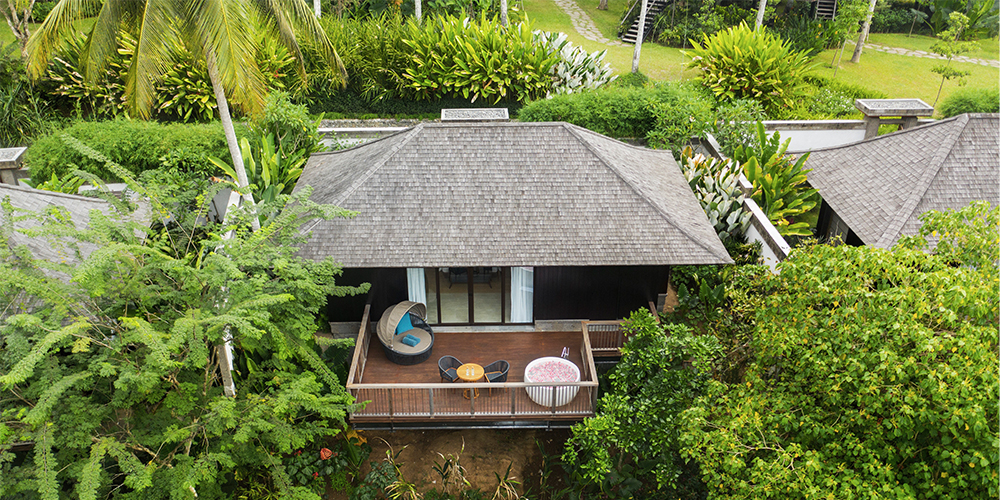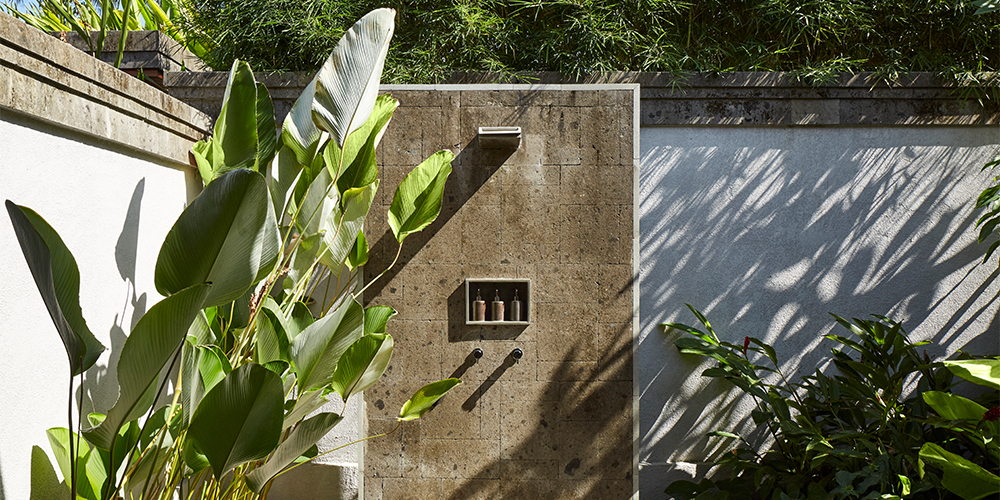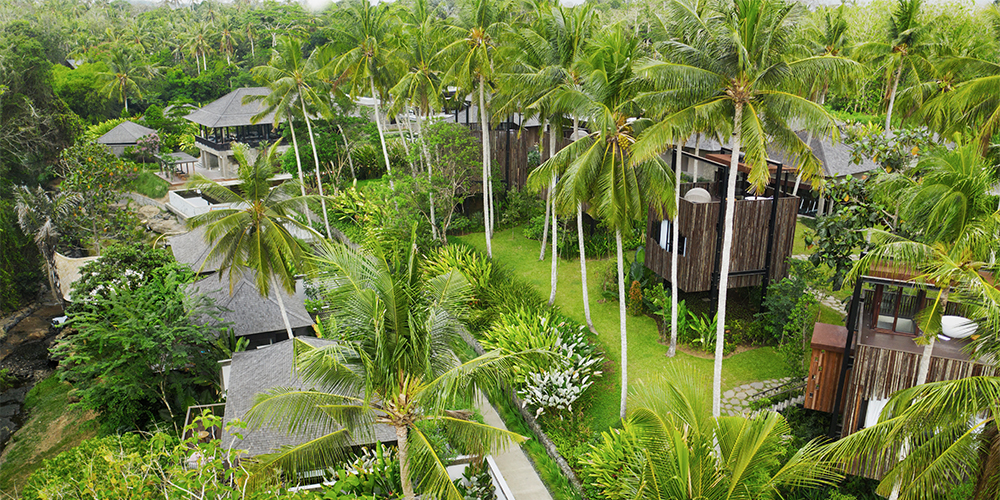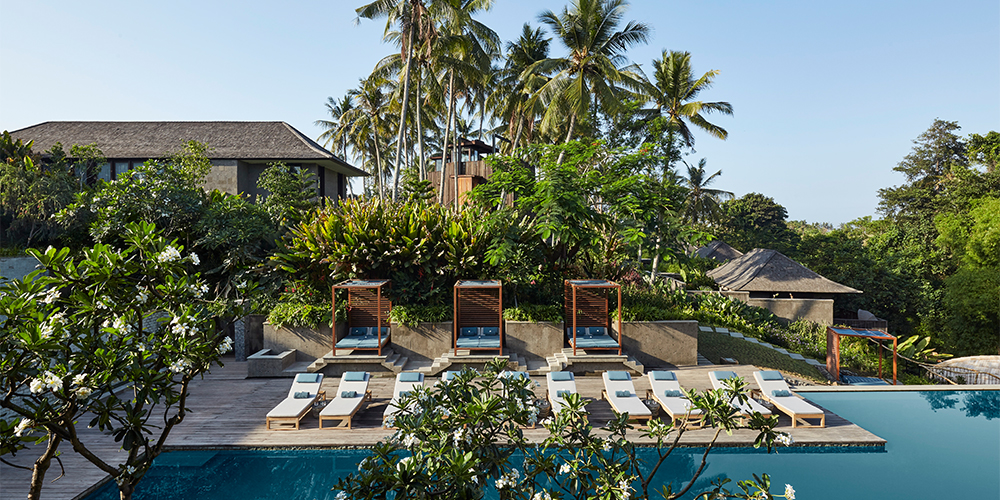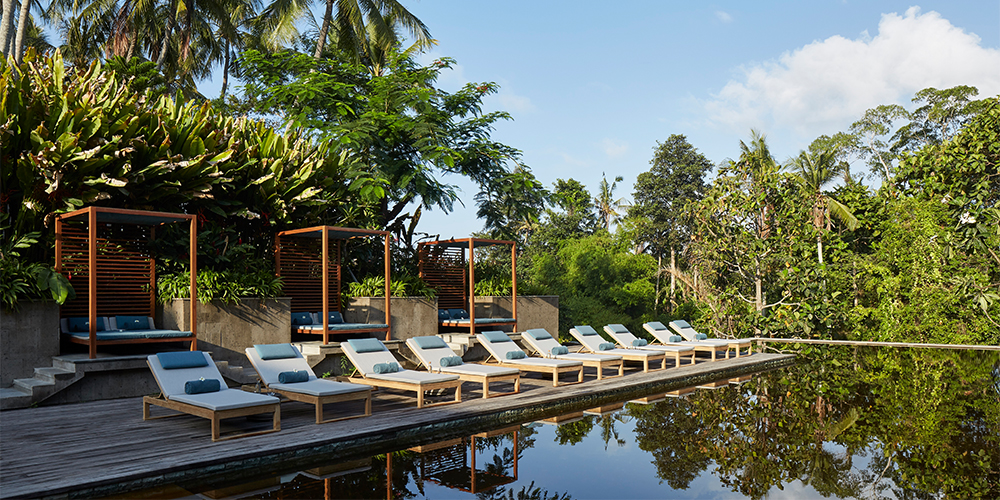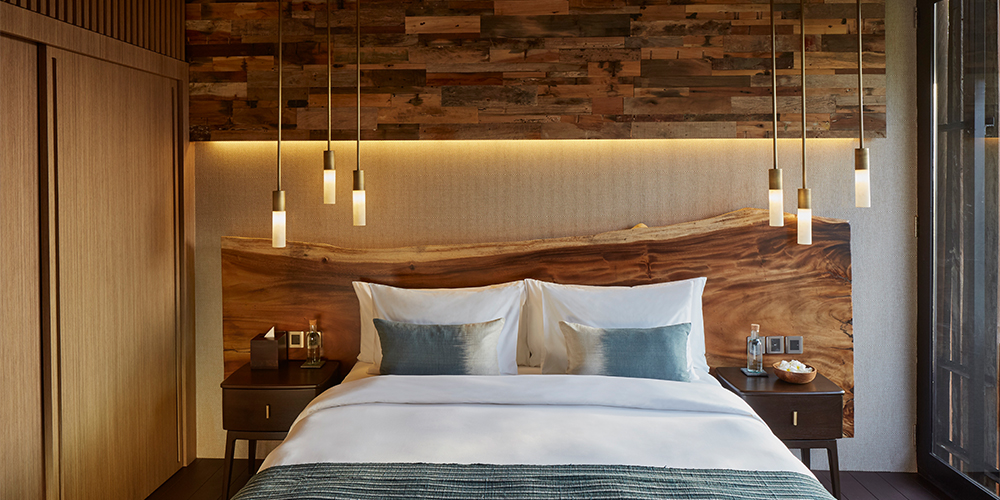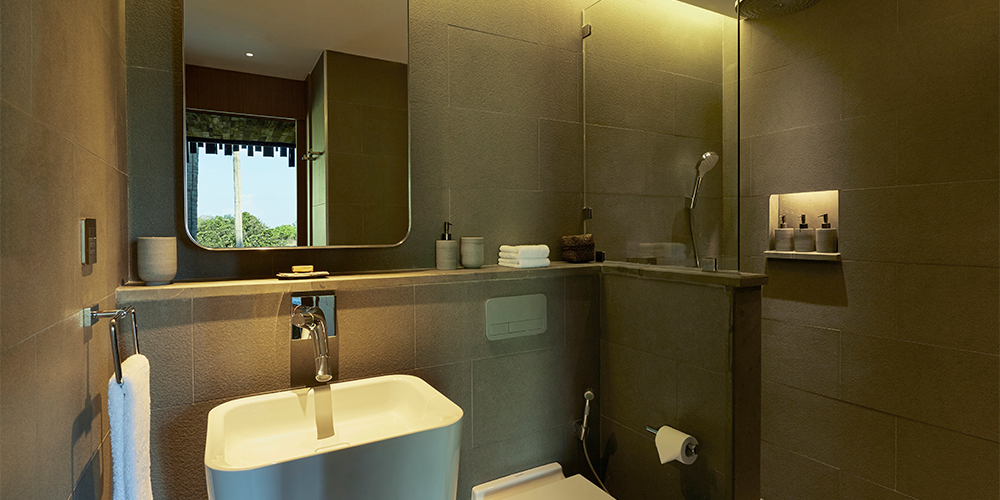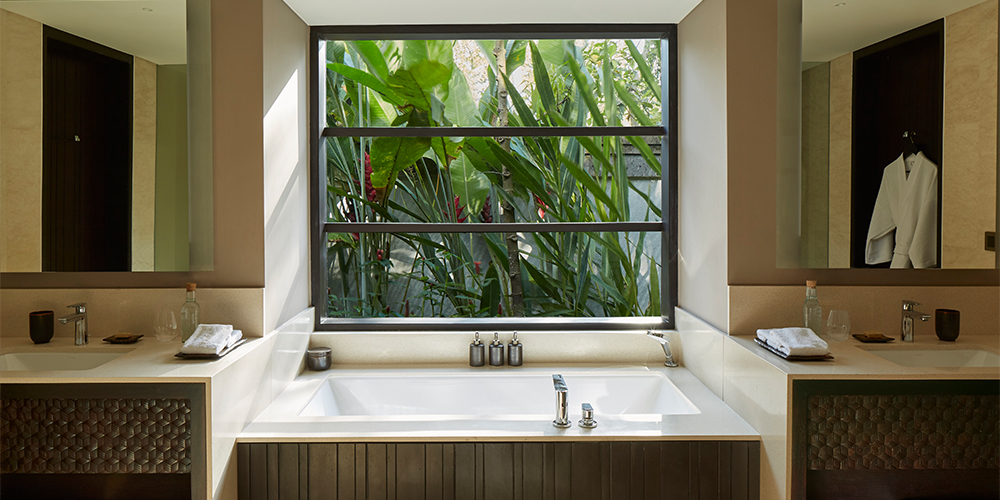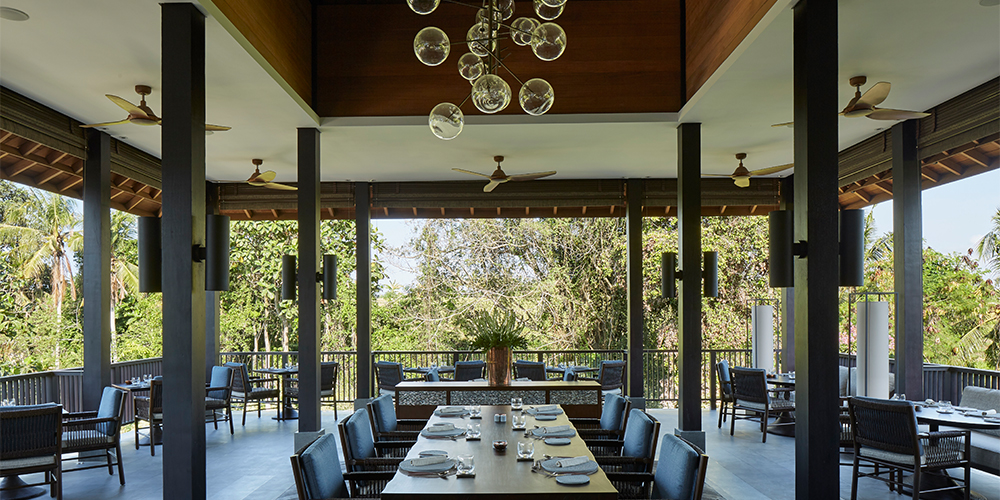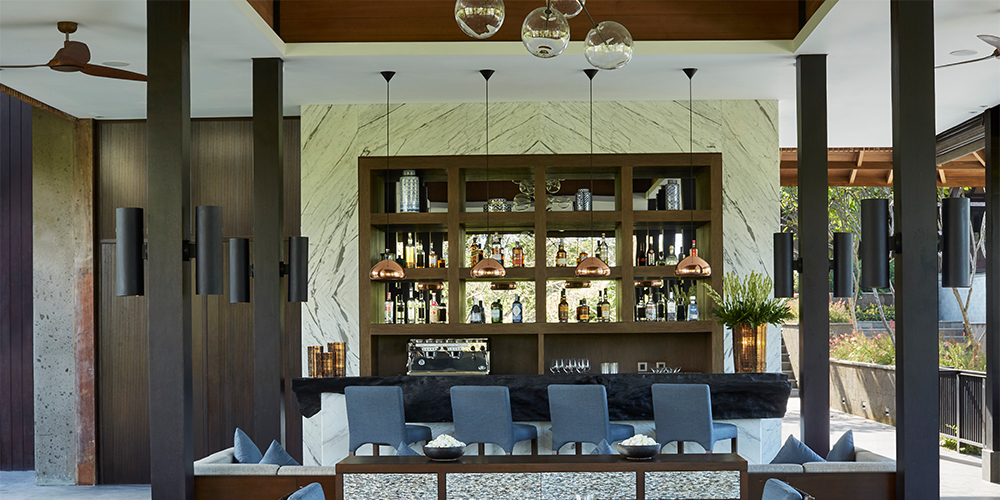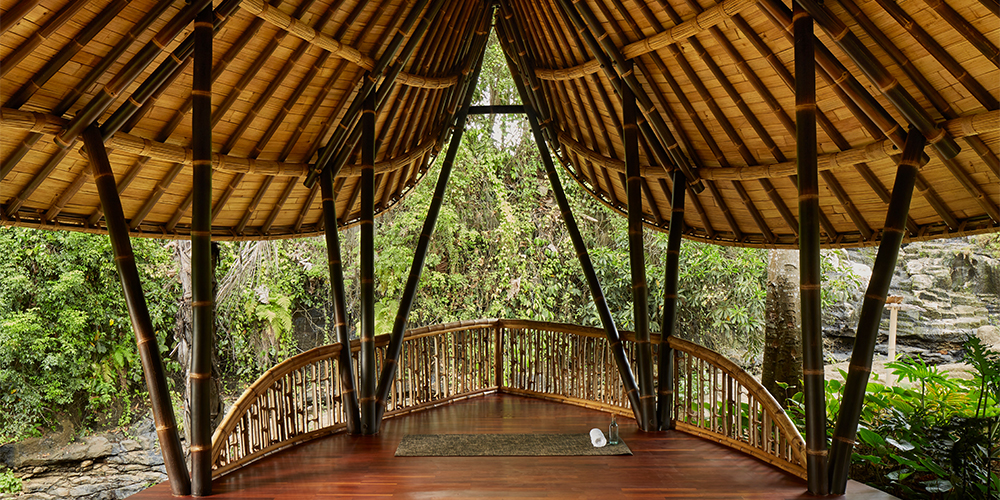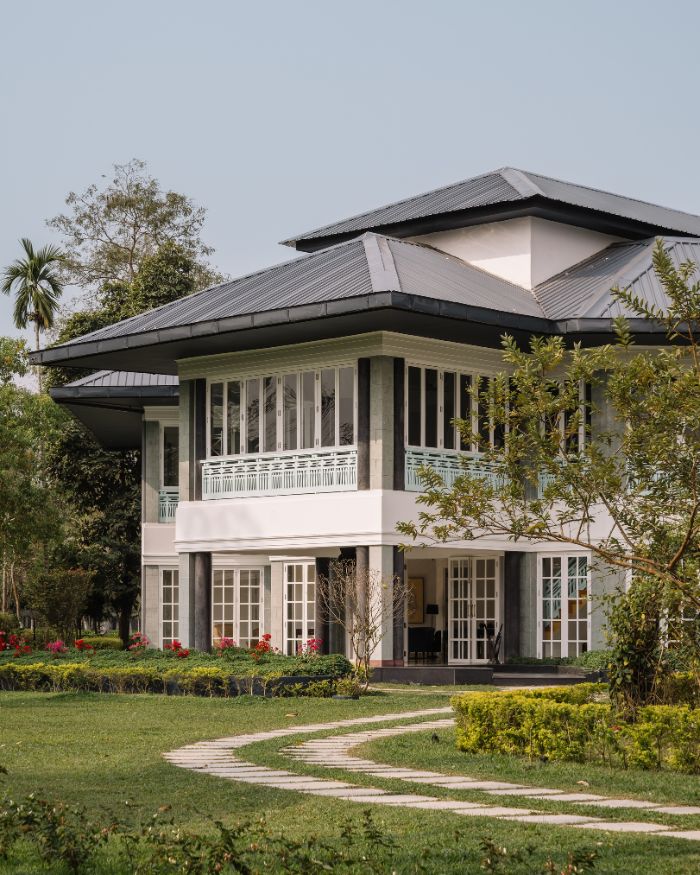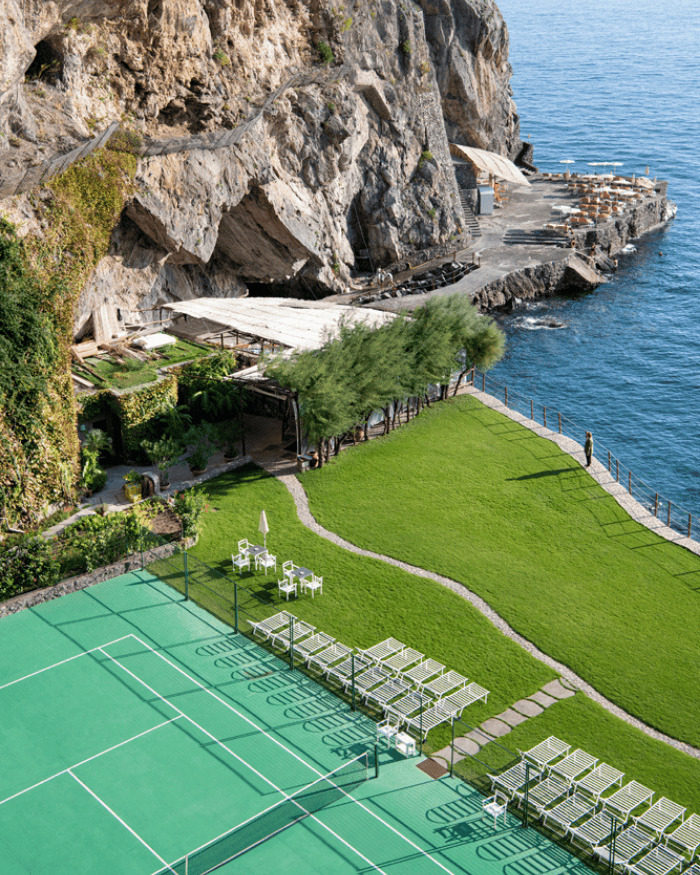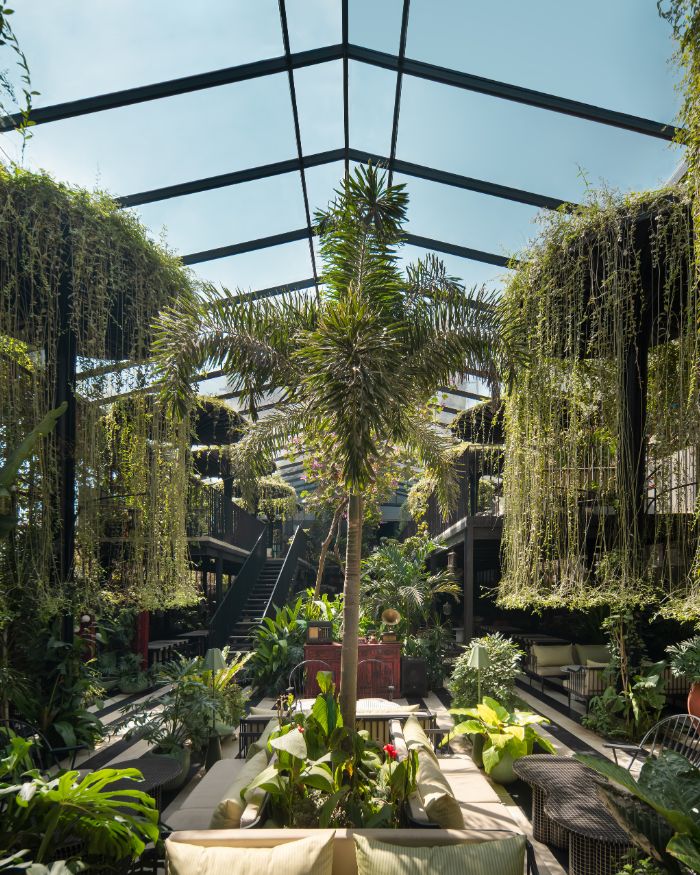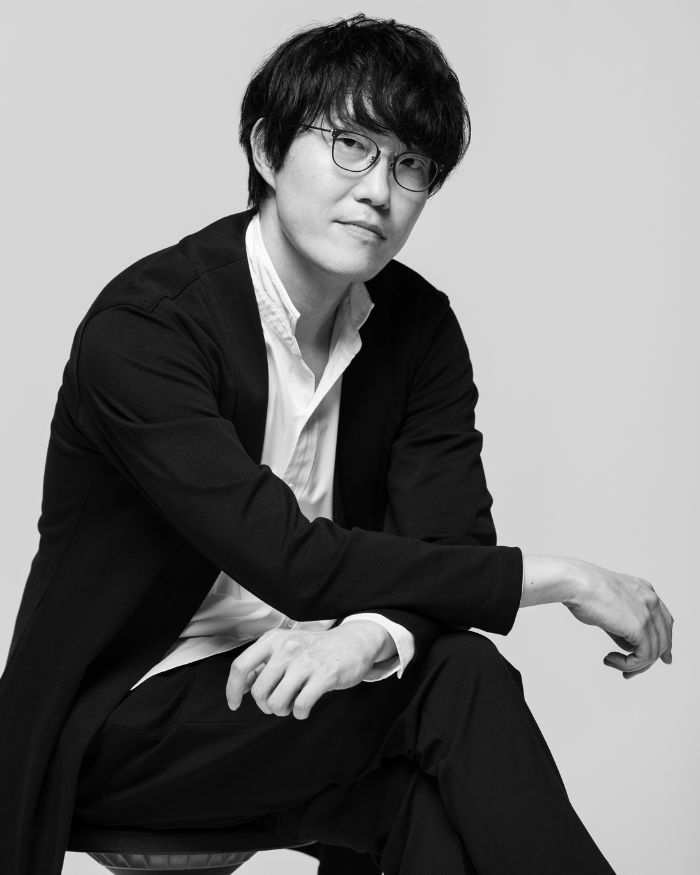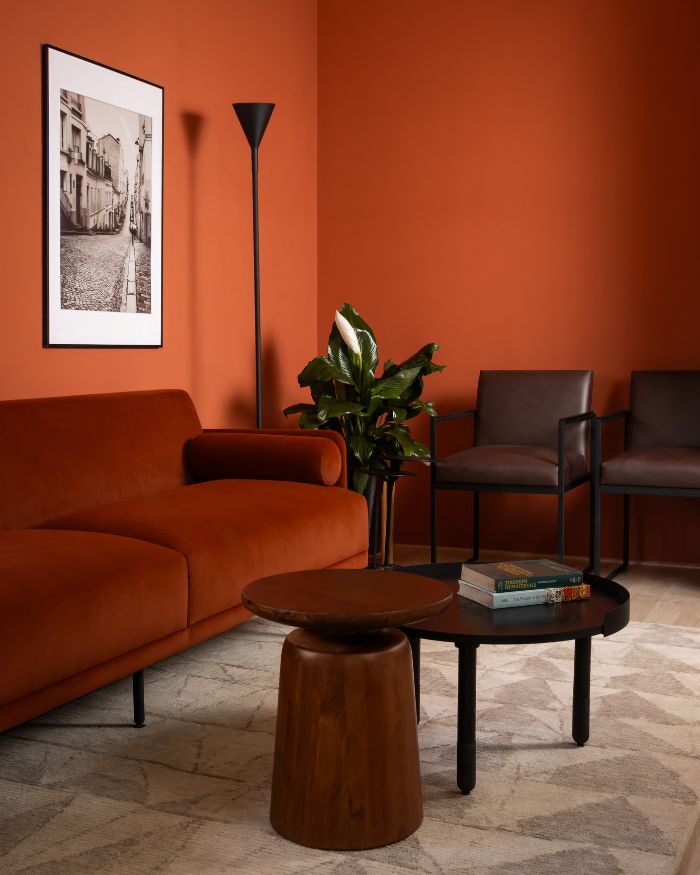Reminiscent of the Balinese landscapes they first encountered when visiting the country in the 1990s, Dimitri Tran and Adrien Portier were impressed the moment they set foot on what was to be the resort’s site. “The gentle river and stunning waterfall juxtaposed with boundless rice fields in the backdrop present an authentic vision of Bali, a postcard perfect view of the island. To this day, we haven’t tired of the scenery,” beams Tran.
The natural features of the locale influenced the design of the project from the onset. A meandering river forming part of the subak rice field irrigation system and a local community that has managed to preserve its authentic Balinese charm served as inspirations. Even the name Nirjhara—Sanskrit for waterfall—was chosen to echo the indigenous roots of the property.
For the architecture, the designers primarily relied on local wood and stone. “Indonesians have been cutting and carving stones for decorative purpose for centuries and we referred to their expertise to create tactile and visual contrasts through the combination of smooth grey andesite and rugged volcanic stones,” divulges Portier.
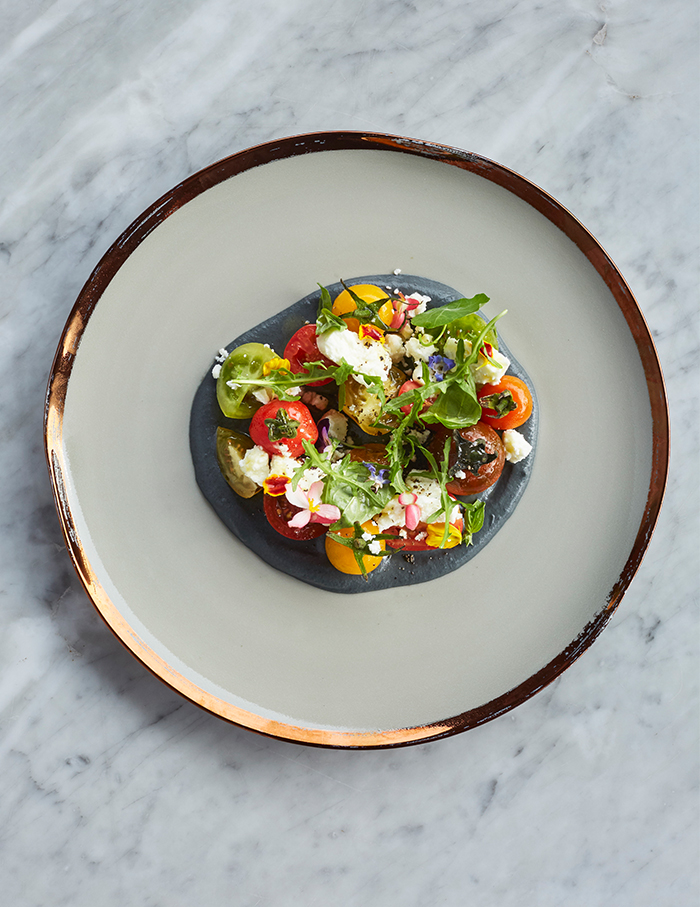
The layout of Nirjhara resort is interspersed with open spaces and pavilions reminiscent of traditional bales—places of gathering for families and local communities in Balinese society. This is also reflected in the spacious common areas, located at the heart of the property, where guests are encouraged to partake in activities organised by the resort, interact with the hosts, and experience Balinese culture.
The hotel follows a modern tropical approach to design—public spaces and river pavilions draw inspiration from Balinese architecture, while the treehouses are relatively contemporary and experimental. On the other hand, the Yoga Shala centre seamlessly merges with nature and pushes the boundaries of sustainable construction.
“We thoroughly enjoyed designing Shala. It sits in a unique location. It is bordered by a charming river and faces an imposing waterfall and a natural green wall connected to the surrounding rice paddies. While planning the yoga pavilion, we realised that the direct proximity to nature dictated its design. So, while Nirjhara’s overall architecture does not typically use bamboo, it felt like a logical choice for the yoga centre,” explains Tran.
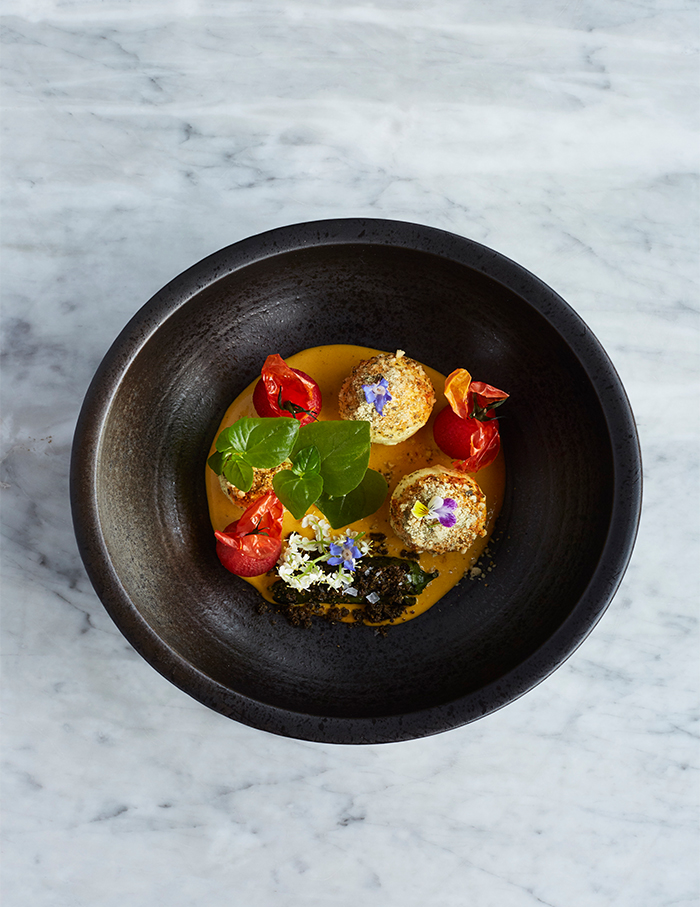
The villas feature clean lines, earthy tones and decorative accents imbued with the quintessence of Indonesian design, while offering a fresh perspective on a tropical aesthetic. For each suite, the resort collaborated exclusively with local artisans and emerging artists from the archipelago to produce bespoke pieces that exhibit exceptional levels of craftsmanship and to promote contemporary Indonesian art, respectively.
Through the use of natural materials combined with expert craftsmanship, the artisans handcrafted elegant, tactile pieces such as fabrics and kimonos produced on the island, woven rattan furniture for the suites, coconut panelling for the headboards, and extensive use of wood carving seen across the resort.
Earthy tones dominate the palette, lending the property a quaint, timeless appeal. The beige hue of marble from Sulawesi, the varying grey shades of the stone cladding, or the perpetually evolving colour of wood panelling serve as the perfect backdrop.
The decorative fabrics are handwoven in East Bali and dyed using natural, plant-based indigo. The turquoise green of the pools and ponds is seen in the batu hijau or green stone used throughout the resort. Not to mention the thriving tropical garden around the property that creates a veritable palette of rich rainbow hues.
“Sustainable luxury is the overarching theme. Yet we wanted the resort to be an experiential place, where guests could feel at home yet utterly transported,” says Portier. While Tran shares, “We do not view sustainability as a marketing scheme. We genuinely believe that businesses should care about the environment, regardless of their industry or location. Some of the most powerful initiatives we’ve incorporated are likely to go unnoticed, although their impact is highly tangible.”
Some of the measures undertaken include setting up heat pumps and solar water heaters, using wood for construction that was either reclaimed, upcycled or grown on certified sustainable plantations, eliminating single-use plastic, setting up a water purification facility on-site to bottle drinking water in recycled glass containers, removing single-use bathroom amenities in each of our suites.
It’s no wonder then that Nirjhara redefines the notion of sustainable luxury with its refined and contemporary design. “We did not want to create yet another eco-lodge. Our take on sustainability is ubiquitous yet discreet. It has been one of our core values since the inception of the project and tangible efforts were made throughout, from design to construction. We believe that sustainability and luxury can go hand in hand without having to compromise,” concludes Portier.

